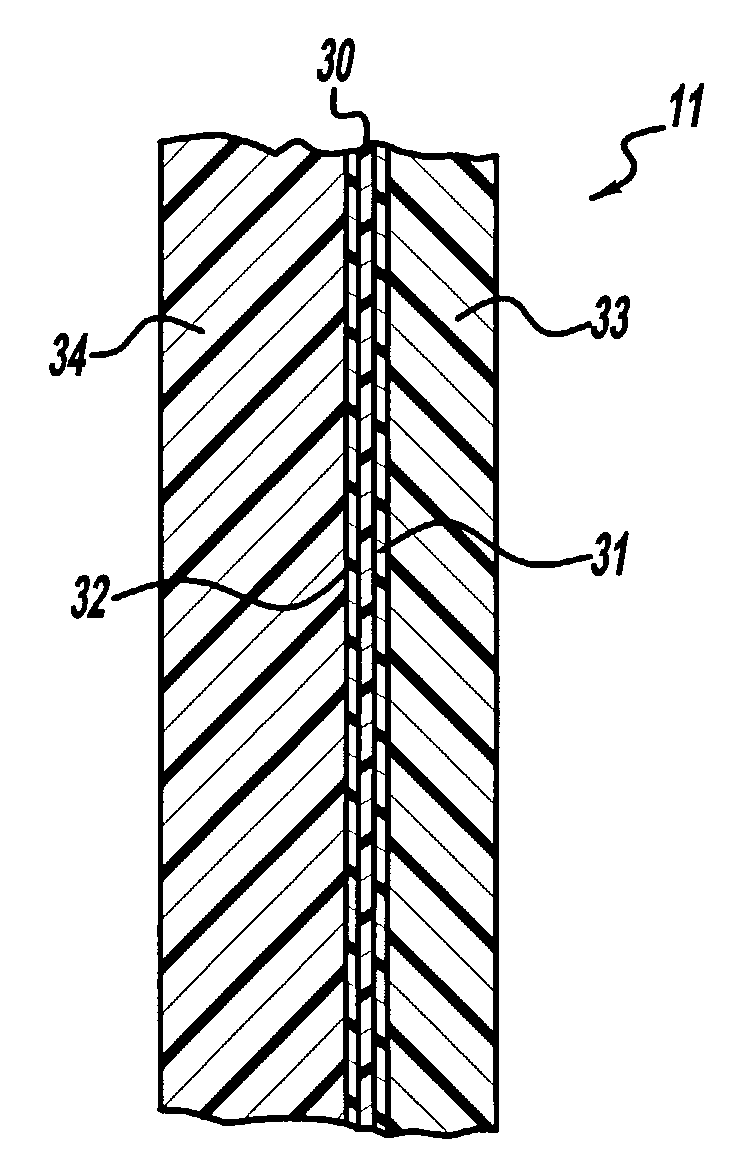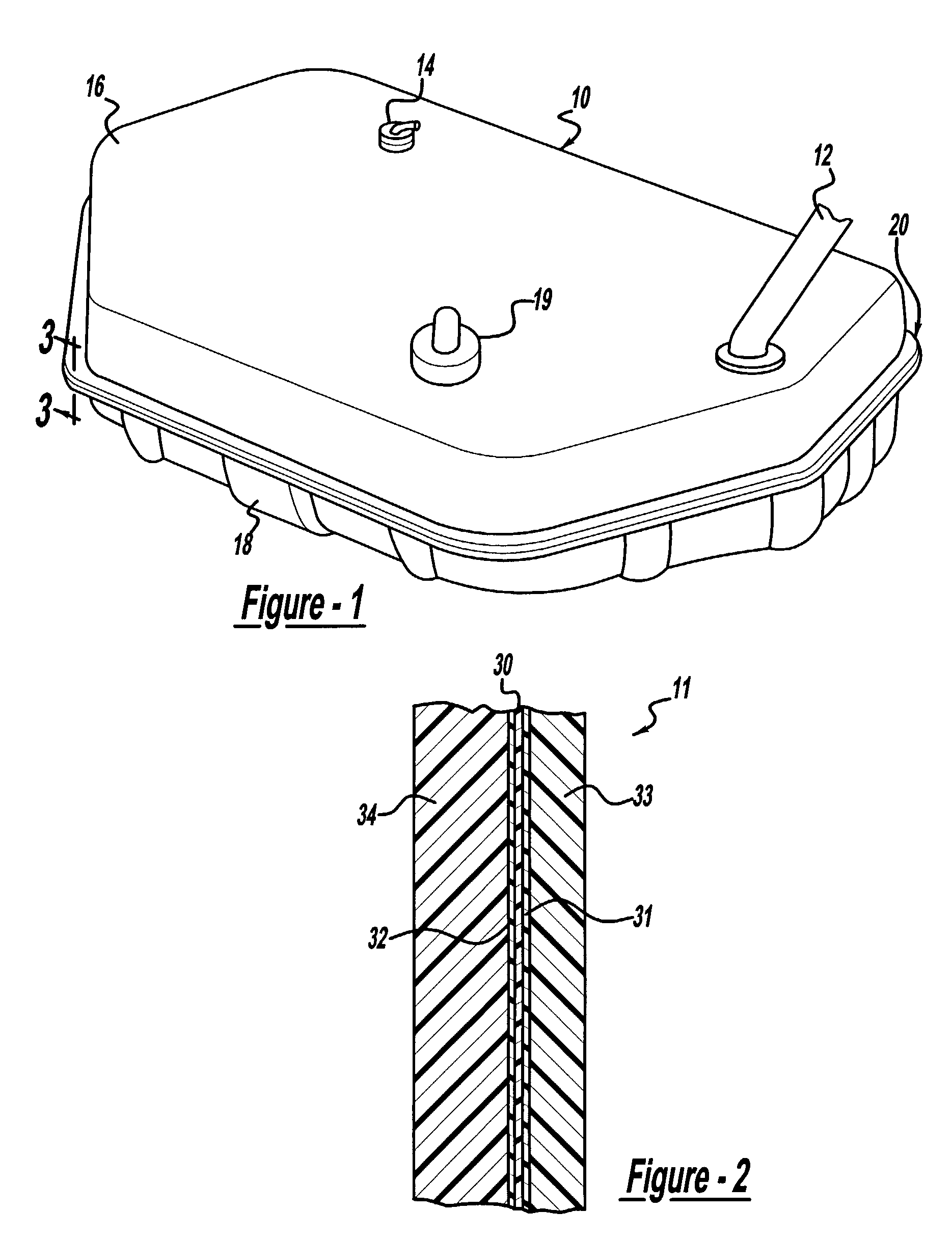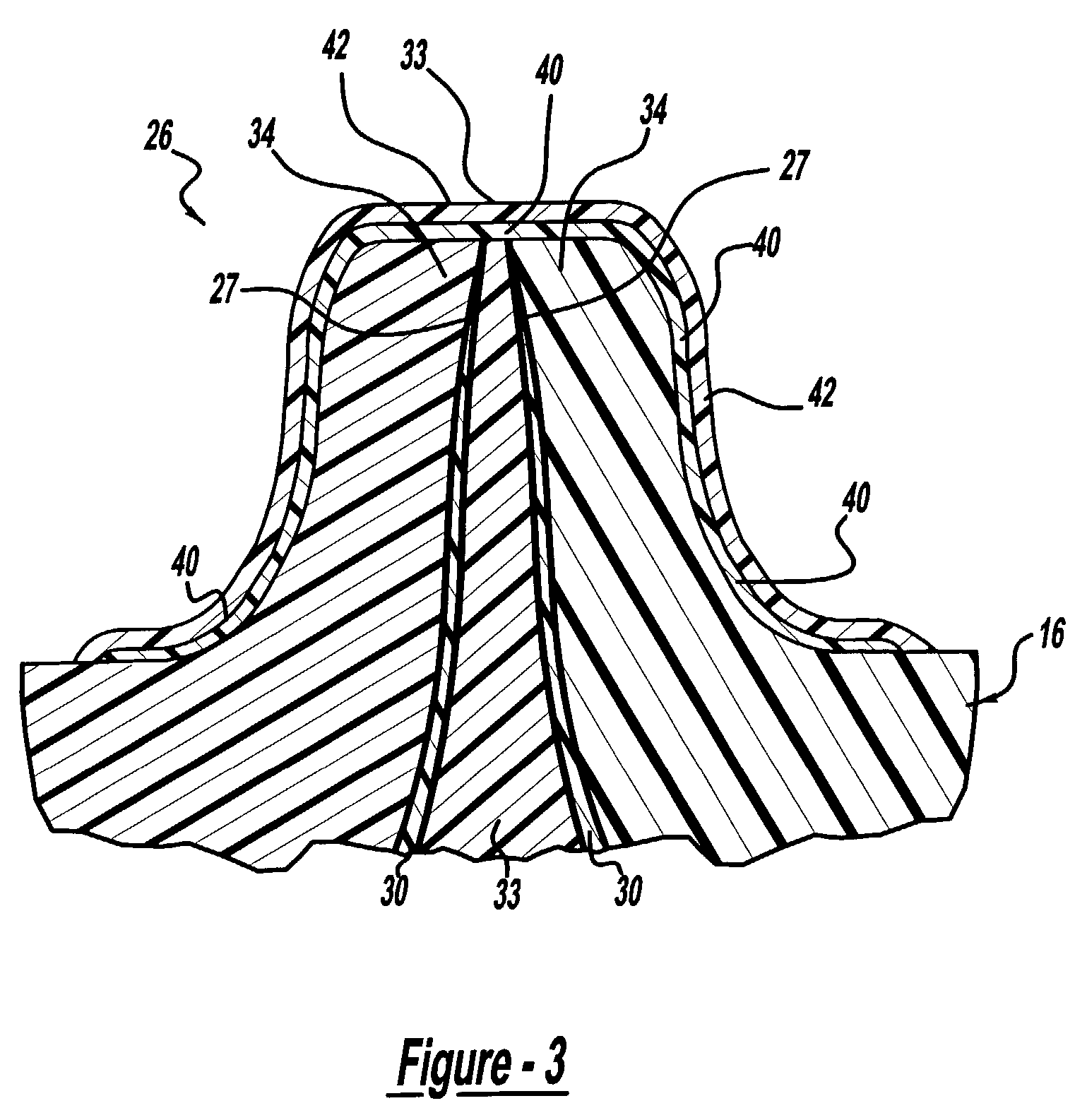Low permeation polymer fuel tank
a fuel tank and polymer technology, applied in the field of polymer fuel tanks, can solve the problems of fuel vapor permeating the walls of the polymer container, adding weight to the vehicle, and being subject to corrosion, so as to reduce the permeation, increase the dispersion pathway, and reduce the permeation
- Summary
- Abstract
- Description
- Claims
- Application Information
AI Technical Summary
Benefits of technology
Problems solved by technology
Method used
Image
Examples
Embodiment Construction
[0019]I. Construction
[0020]A polymeric fuel tank shell 10 is generally illustrated in FIG. 1 to include upper and lower shell halves 16 and 18 coupled together by flanges 20. The upper shell half 16 may include a filler neck or pipe 12, a vapor valve 14, a fill limit valve 19, and other attached items. The configuration of the filler neck 12, vapor valve 14, and fill limit valve 19 may vary from application to application.
[0021]As shown in FIG. 2, the shell halves of fuel tank 10 are formed from a multilayer wall 11 having layers that provide structural support and a vapor barrier. Structural support layers 33 and 34 protect the fuel tank from abrasion and impact and provide the necessary rigidity and strength. The structural support layers 33 and 34 may be formed out of a variety of suitable materials known in the art such as polyethylene, high-density polyethylene, nylon, polypropylene, polyester, and a variety of other synthetic materials. Desirable properties of the structural s...
PUM
| Property | Measurement | Unit |
|---|---|---|
| temperatures | aaaaa | aaaaa |
| temperatures | aaaaa | aaaaa |
| temperatures | aaaaa | aaaaa |
Abstract
Description
Claims
Application Information
 Login to View More
Login to View More - R&D
- Intellectual Property
- Life Sciences
- Materials
- Tech Scout
- Unparalleled Data Quality
- Higher Quality Content
- 60% Fewer Hallucinations
Browse by: Latest US Patents, China's latest patents, Technical Efficacy Thesaurus, Application Domain, Technology Topic, Popular Technical Reports.
© 2025 PatSnap. All rights reserved.Legal|Privacy policy|Modern Slavery Act Transparency Statement|Sitemap|About US| Contact US: help@patsnap.com



